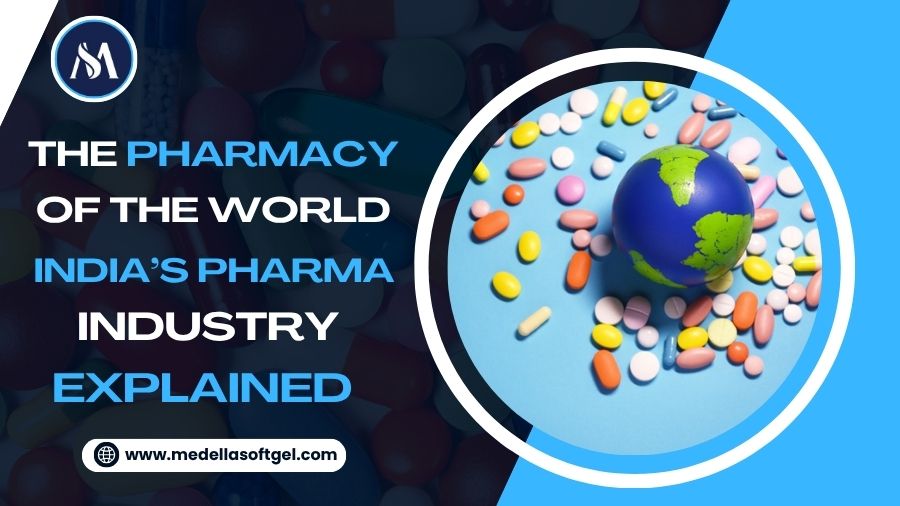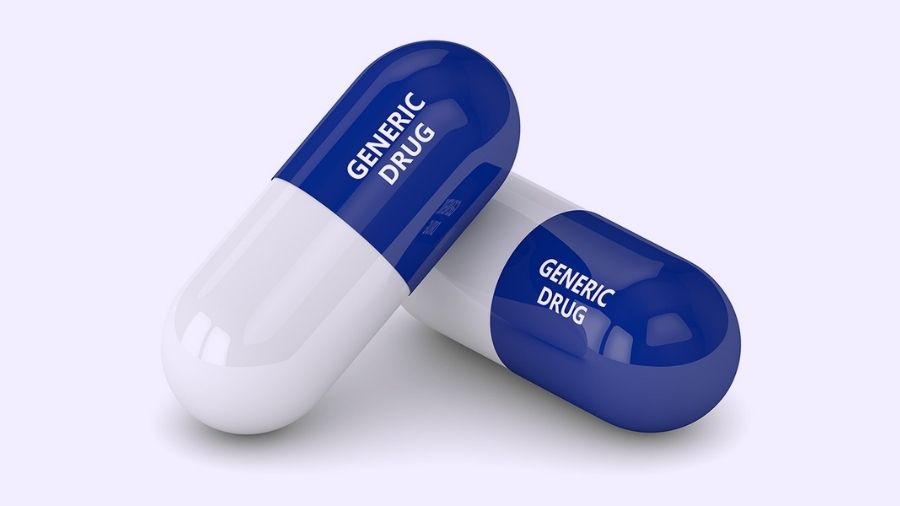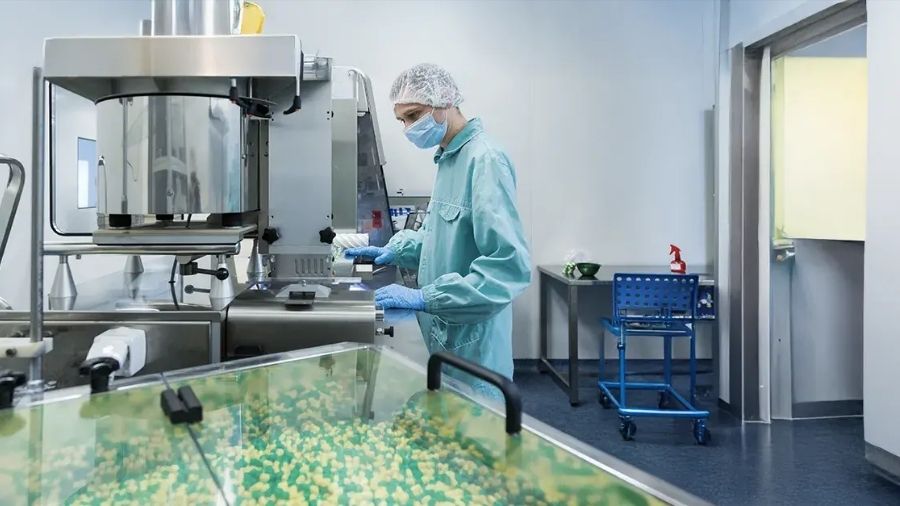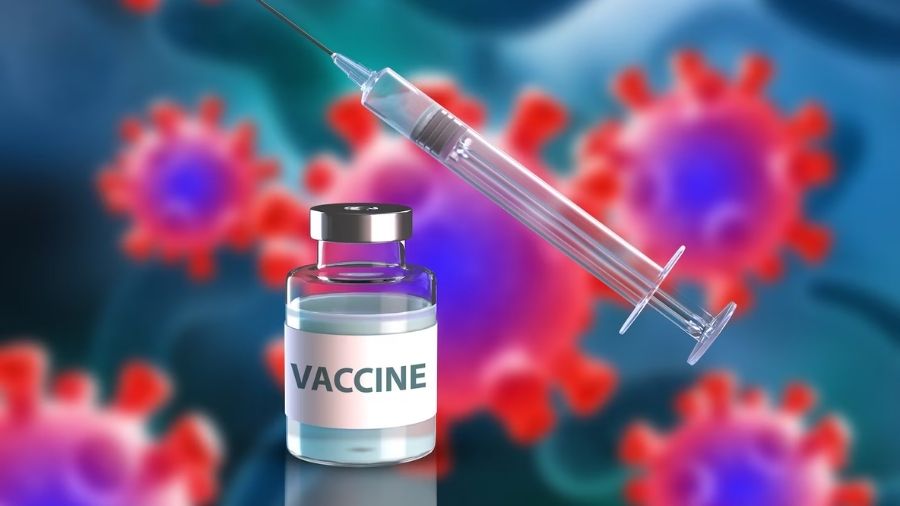
The Pharmacy of the World – India’s Pharma Industry Explained
India’s pharma industry is now a global leader in the for production and export of reasonably priced, high-quality medications, earning the moniker “Pharmacy of the World” with good reason. A strong manufacturing infrastructure, a focus on innovation, and strategic government policies have all contributed to the country’s rise to this position. India is currently the world’s third-largest producer of pharmaceuticals by volume and 14th by value, contributing significantly to the availability of affordable healthcare solutions for millions of people worldwide.
The Genesis of a Global Powerhouse

A significant legal change is the foundation of India’s growth in the pharmaceutical sector. Prior to the 1970s, foreign multinational corporations controlled the majority of the Indian market, making drugs unaffordable and mainly unavailable to the general public. The Indian Patents Act of 1970 changed everything. India’s patent system was changed from a “product patent” to a “process patent” system by this historic law. This meant that a drug development process could be patented, but the drug itself could not.
As long as they created an alternative manufacturing method, this new framework allowed Indian businesses to lawfully reverse-engineer and create generic versions of patented medications. The Indian pharmaceutical industry underwent a revolution as a result of this action, which promoted a culture of creativity and research aimed at developing affordable substitutes. The foundation for India’s future supremacy was established by this legislative foresight as well as a robust educational system that generated a talented pool of scientists and engineers.
In just a few years, India was able to produce affordable, high-quality generic medications that are chemically identical to name-brand medications but cost a fraction of the price. This knowledge gained international recognition in the early 2000s when Indian businesses provided inexpensive, life-saving HIV/AIDS medications to African nations, establishing the pharmacy capital of the world.
The Pillars of Success – Key Segments of the Indian Pharma Industry
A few fundamental pillars support the Indian pharmaceutical industry’s success and help to explain its standing in the world.
1. Generic Drugs – The Backbone of the Industry

The success of Indian pharmaceuticals is based on generics. They are the industry’s largest export, with India providing more than 25% of all medications in the UK and about 45% of all generic medications used in the US. Indian generics are a popular option globally due to their low production costs, stringent quality control procedures, and numerous FDA-approved manufacturing facilities, most of which are located outside of the US. Global healthcare costs have significantly decreased as a result of the availability of reasonably priced medication, especially for chronic illnesses like diabetes, high blood pressure, and cardiovascular disorders.
2. Contract Manufacturing – The Rise of Third-Party Pharma

India has emerged as a global leader in pharma contract manufacturing in recent years. In this service, a business (the contract manufacturer) makes medications for another business, which subsequently sells them under its own name.
Many smaller businesses, both domestic and foreign, have been able to enter the market thanks to this model without having to make the huge financial commitment necessary to establish their own manufacturing facilities. Offering a versatile and affordable solution for a variety of products, from tablets and capsules to injections and syrups, services like Third-Party Pharma Manufacturing Company in India have flourished.
By outsourcing the intricate and expensive manufacturing process to a reliable partner, this business model—often referred to as Third Party Manufacturing Pharma—allows organizations to concentrate on their core strengths, including distribution, marketing, and research. As a result, there is now a thriving network of specialized manufacturers that provide a wide range of services, such as quality control, R&D, and regulatory compliance, in addition to production.
3. Vaccines and Biosimilars – Stepping Up the Value Chain

In addition to generics, India supplies more than half of the world’s vaccines, making it a significant player in the global vaccine market. During the COVID-19 pandemic, Indian manufacturers created and shipped millions of vaccine doses to countries in need, demonstrating the nation’s proficiency in this area.
In addition to vaccines, Indian businesses are now concentrating on more sophisticated goods like biosimilars, which are generic forms of intricate biological medications. India’s desire to advance up the value chain is demonstrated by these products, which are far more difficult to produce and demand large investments in R&D and advanced manufacturing capabilities.
The Road Ahead – Challenges and Opportunities
Even though India’s pharmaceutical sector has seen tremendous success, there are still difficulties. In order to meet constantly changing international standards, the industry must constantly upgrade its technology and contend with growing competition from nations like China. In order to preserve their export markets, businesses must make significant investments in compliance and quality control due to the increasingly complex regulatory environment.
But the future appears promising. The Indian government has started a number of programs to encourage the industry’s expansion after realizing how important it is. Companies are being encouraged to increase their R&D expenditures and produce high-value products, such as Active Pharmaceutical Ingredients (APIs), which are essential chemical components of medications, by policies like the Production Linked Incentive (PLI) scheme. This is a component of a larger plan to lessen India’s dependency on imports, especially those from China, and to increase its resilience and self-sufficiency in the global supply chain.
India is positioned to continue to be the most reliable and reasonably priced source of pharmaceuticals in the world for many years to come, thanks to a solid foundation, a knowledgeable workforce, and a clear government vision. Medella Softgel proudly contributes to this thriving industry with quality pharma solutions.
Also Read: Essential Documents Required for Third-Party Pharma Manufacturing in India









